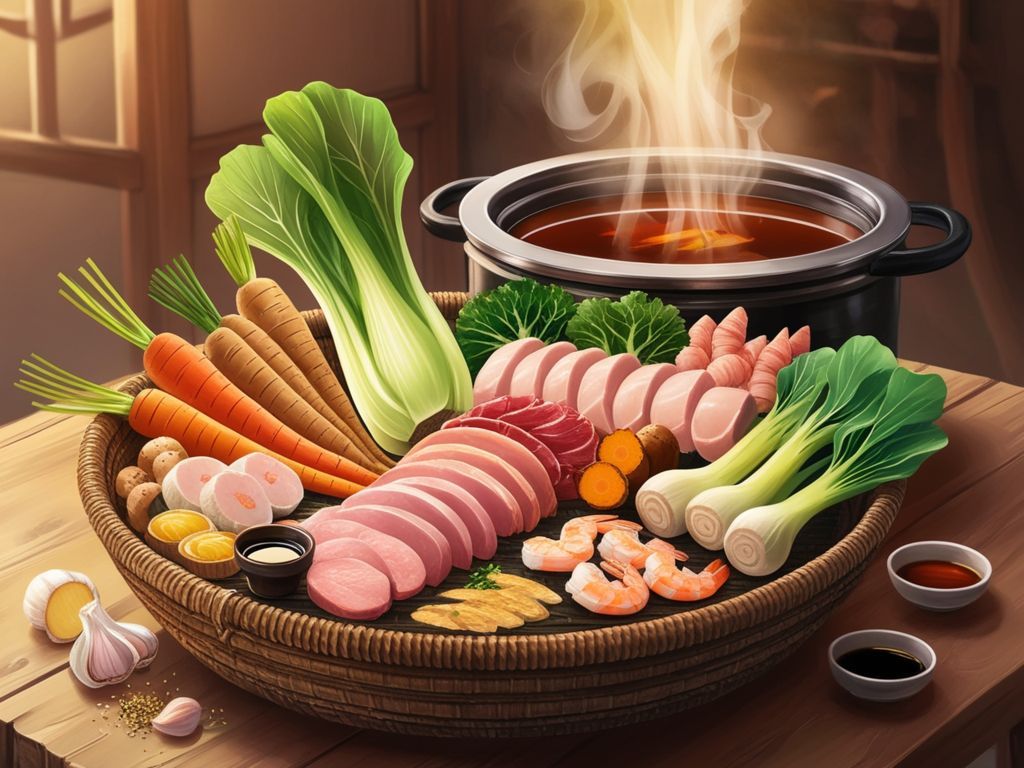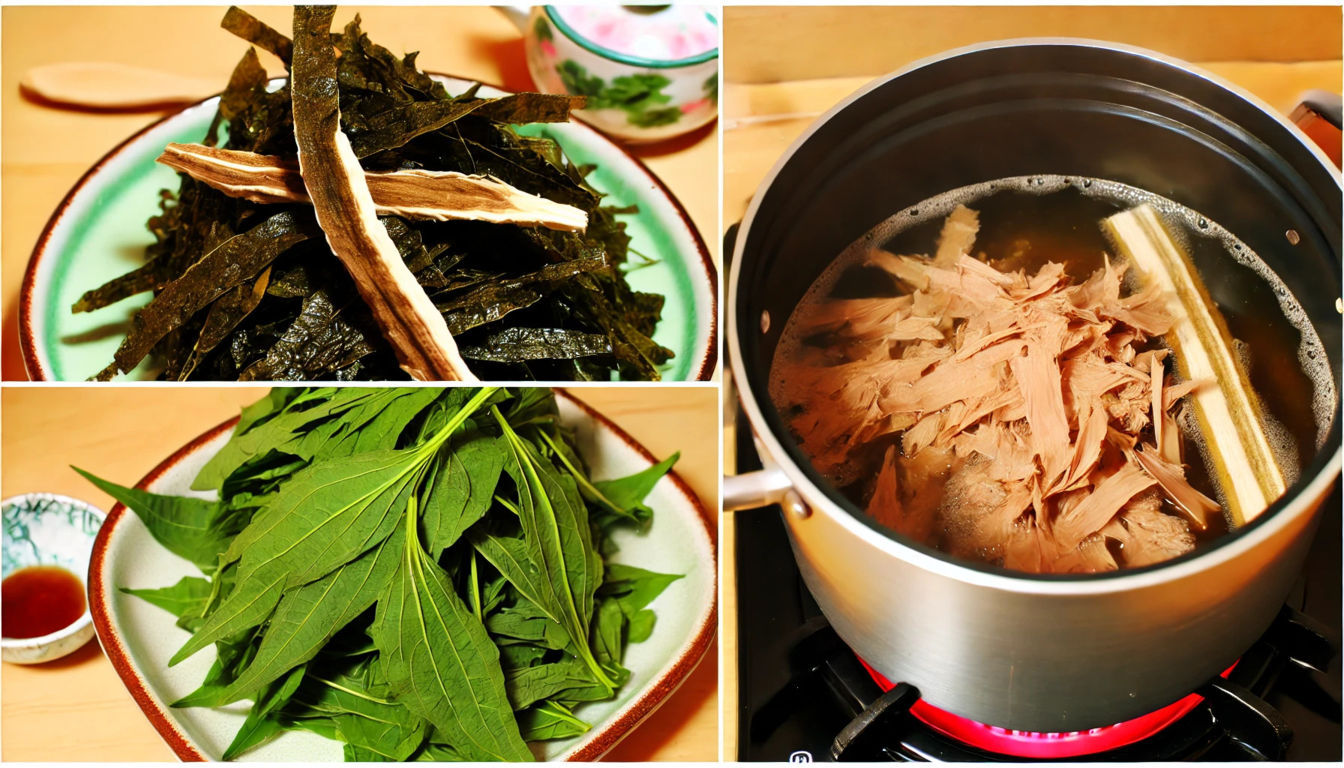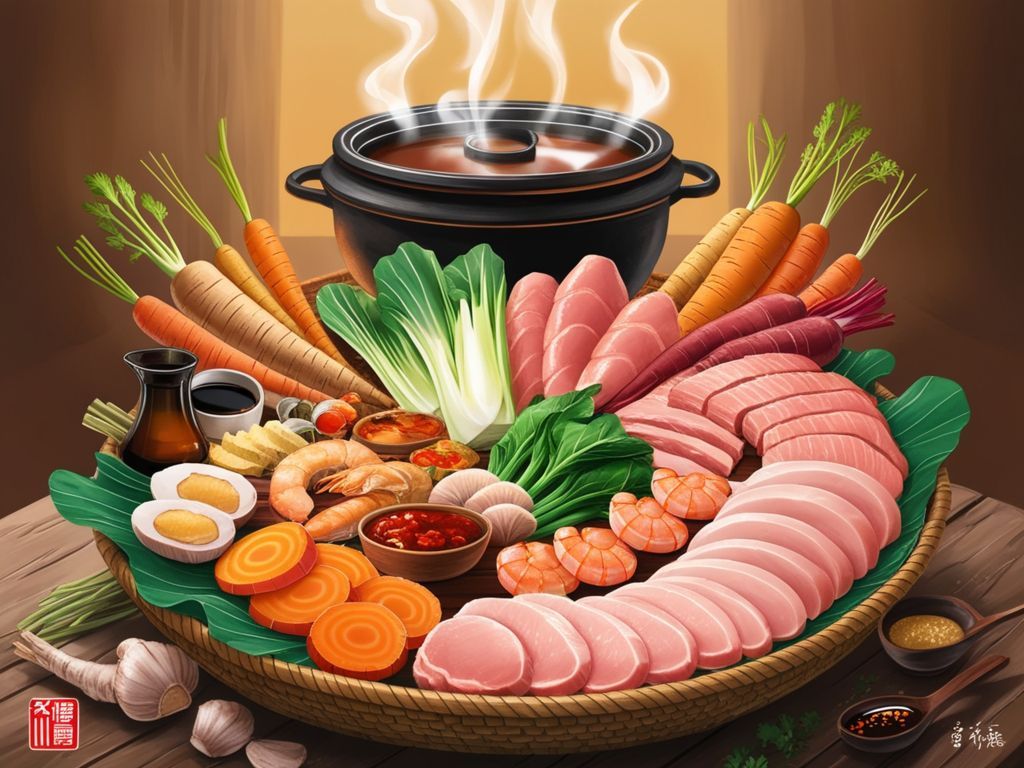
What Ingredients Are Commonly Used in Nabe Hotpot?
Introduction to Nabe Hotpot and Its Cultural Significance
Nabe Hotpot is more than just a meal; it's a cultural experience deeply rooted in Japanese tradition. This communal dish is often enjoyed during the colder months, bringing family and friends together around a bubbling pot filled with flavorful ingredients. As we explore the key components that make Nabe Hotpot so special, you'll gain insight into the rich history and cultural significance of this beloved dish.
The Tradition of Nabe Hotpot in Japanese Cuisine
Nabe Hotpot has been a staple in Japanese households for centuries, cherished for its versatility and the warmth it brings to any gathering. This dish's beauty lies in its simplicity, allowing for a wide range of ingredients that can be tailored to personal preferences and regional variations.
Communal Dining: The Role of Nabe Hotpot in Family Gatherings
One of the most cherished aspects of Nabe Hotpot is its role in fostering togetherness. Whether it's a family dinner or a celebration with friends, this dish encourages sharing and conversation, making it a central part of Japanese social life.
Seasonal Variations: How Nabe Ingredients Change with the Seasons
Nabe Hotpot is highly adaptable to seasonal ingredients. In winter, hearty vegetables and meats are favored, while spring might bring lighter, fresher ingredients. This flexibility ensures that Nabe Hotpot remains a beloved dish year-round, always offering something new to the palate.
Key Ingredients Commonly Used in Nabe Hotpot

The heart of Nabe Hotpot lies in its ingredients, each chosen for its unique contribution to the dish's flavor and texture. Let's dive into the essential components that make up a traditional Nabe Hotpot.
Kombu: The Foundation of a Flavorful Nabe Broth
Kombu is a type of seaweed that serves as the backbone of Nabe broth, imparting a deep umami flavor that forms the base of the dish. To prepare Kombu for Nabe, it is typically soaked in water to release its flavors, then simmered gently to create a rich, savory broth.
Dashi: The Heart of Nabe Hotpot
Dashi is another key element in Nabe Hotpot, often made by combining Kombu with bonito flakes to create a complex, aromatic broth. The process of making Dashi is simple yet crucial, as it sets the stage for all the other ingredients to shine.
Shiitake Mushrooms: Adding Earthiness to Your Nabe
Shiitake mushrooms bring a deep, earthy flavor to Nabe Hotpot, complementing the umami-rich broth. When selecting Shiitake mushrooms, look for those with thick caps and a robust aroma, as these will provide the most flavor. Preparing Shiitake mushrooms for Nabe involves simply cleaning them and adding them to the pot, where they absorb the broth's flavors beautifully.
Nappa Cabbage: A Staple Vegetable in Nabe Hotpot
Nappa cabbage is a staple in Nabe Hotpot, offering a mild flavor and a satisfying crunch. This vegetable is typically added towards the end of cooking to maintain its texture, making it a perfect balance to the richer, heavier ingredients in the dish.
Thinly Sliced Beef: The Protein of Choice in Nabe Hotpot
Thinly sliced beef is often the star protein in Nabe Hotpot, prized for its tenderness and ability to absorb the broth's flavors quickly. When choosing beef for Nabe, opt for cuts like ribeye or sirloin, which have enough marbling to remain juicy and flavorful even after cooking in the broth. You can see Nabe hotpot story for more information about that.
Tofu: A Versatile Ingredient in Nabe Hotpot
Tofu is a versatile and popular ingredient in Nabe Hotpot, valued for its ability to soak up flavors while adding a delicate texture to the dish. There are various types of Tofu you can use in Nabe, from silken to firm, each bringing a different texture to the hotpot.
Udon Noodles: Adding Hearty Texture to Your Nabe
Udon noodles are a common addition to Nabe Hotpot, providing a hearty texture that complements the other ingredients. These thick, chewy noodles are typically added towards the end of the cooking process, absorbing the broth's flavors while retaining their satisfying bite.
Miso Paste: Enhancing the Umami Flavor in Nabe
Miso paste is often used to enhance the umami flavor in Nabe Hotpot, particularly in variations like Miso Nabe. This fermented soybean paste is rich and savory, blending seamlessly with the Dashi broth to create a deeply flavorful base for the hotpot.
Alternative Ingredients for a Unique Nabe Experience

While the traditional ingredients of Nabe Hotpot are beloved, there are many alternatives that can add a unique twist to the dish. Here are some options to consider.
Exploring Seafood Options: Fish, Shrimp, and More
Adding Seafood to your Nabe Hotpot can introduce new flavors and textures. Fish, shrimp, and even shellfish can be used to create a seafood-rich hotpot that's both light and flavorful.
Enoki Mushrooms: A Delicate Addition to Your Nabe
Enoki mushrooms are a delicate and visually appealing addition to Nabe Hotpot. Their long, thin stems and mild flavor make them a perfect complement to the richer ingredients in the dish.
Fish Cakes: Adding Texture and Flavor to Nabe Hotpot
Fish cakes are another excellent addition to Nabe Hotpot, offering a unique texture and a mild, savory flavor that blends well with the other ingredients. They can be found in various forms, from sliced cakes to stuffed rolls, each adding a different dimension to the hotpot.
Preparing the Perfect Nabe Broth
The broth is the soul of Nabe Hotpot, and creating the perfect base is essential for a delicious dish.
Combining Kombu and Dashi for a Rich Nabe Base
By combining Kombu and Dashi, you create a broth that is both rich and balanced. The Kombu adds depth, while the Dashi provides a subtle smokiness, making the broth the perfect foundation for your Nabe Hotpot.
Incorporating Miso Paste and Other Seasonings
Adding Miso paste and other seasonings like soy sauce or sake can elevate the flavor of your Nabe Hotpot. The key is to balance these elements carefully, ensuring that the broth is flavorful but not overpowering.
Tips and Tricks for a Memorable Nabe Hotpot Experience

Making a great Nabe Hotpot goes beyond just having the right ingredients; it's also about the techniques and tips that bring everything together.
Ponzu Sauce and Other Dipping Sauces for Nabe
Dipping sauces like Ponzu sauce are essential for adding an extra layer of flavor to your Nabe Hotpot. Ponzu is a citrus-based sauce that pairs well with the rich flavors of the hotpot, offering a refreshing contrast.
The Importance of Fresh Ingredients in Nabe
Fresh ingredients are key to making a delicious Nabe Hotpot. Whether it's vegetables, meat, or seafood, using the freshest ingredients will ensure that your hotpot is flavorful and satisfying.
Common Mistakes to Avoid When Making Nabe Hotpot
Avoiding common mistakes can make the difference between a good Nabe Hotpot and a great one.
FAQs
- What are the best vegetables for Nabe Hotpot?
The best vegetables for Nabe Hotpot include Nappa cabbage, Shiitake mushrooms, and Daikon radish. These vegetables provide a balance of flavors and textures that complement the richness of the broth. - Can I make Nabe Hotpot without meat?
Yes, Nabe Hotpot can be made without meat. You can substitute with Tofu, mushrooms, and various vegetables to create a satisfying vegetarian version. - How do I store leftover Nabe Hotpot?
Leftover Nabe Hotpot can be stored in an airtight container in the refrigerator for up to two days. Reheat it gently on the stove before serving to retain its flavor and texture. - What dipping sauces are best for Nabe Hotpot?
Ponzu sauce is a popular choice for Nabe Hotpot. It provides a tangy, citrusy contrast to the rich broth. Soy sauce and sesame-based sauces are also excellent options. - How can I add more flavor to my Nabe Hotpot?
Adding ingredients like Miso paste, soy sauce, and sake can enhance the flavor of your Nabe Hotpot. You can also experiment with different types of Dashi to create a more complex broth.
Conclusion: Crafting the Perfect Nabe Hotpot at Home
Creating the perfect Nabe Hotpot at home is all about choosing the right ingredients and taking the time to prepare them properly. By following the tips and suggestions outlined in this article, you can enjoy a delicious and authentic Nabe Hotpot that brings warmth and flavor to your dining table.

